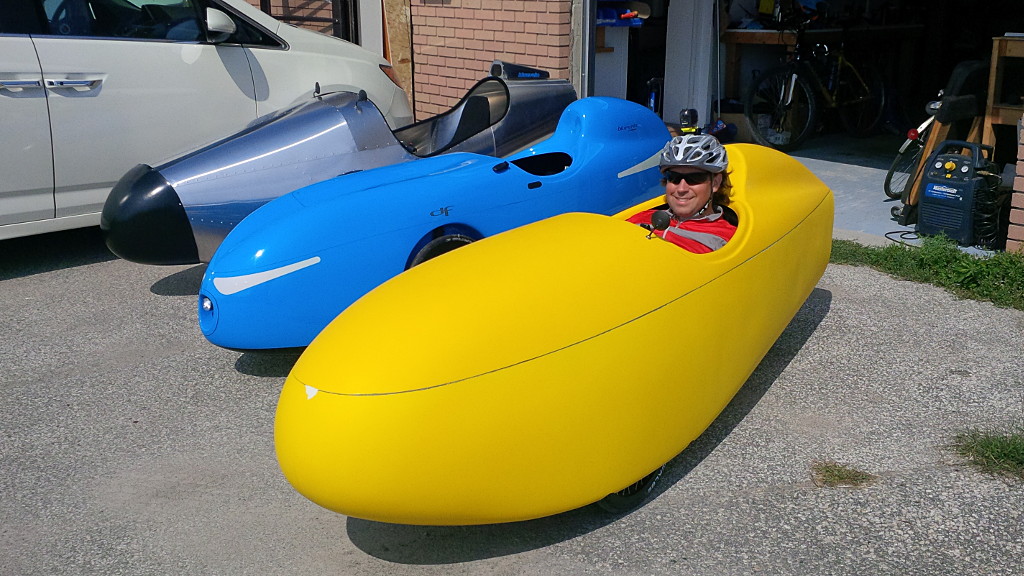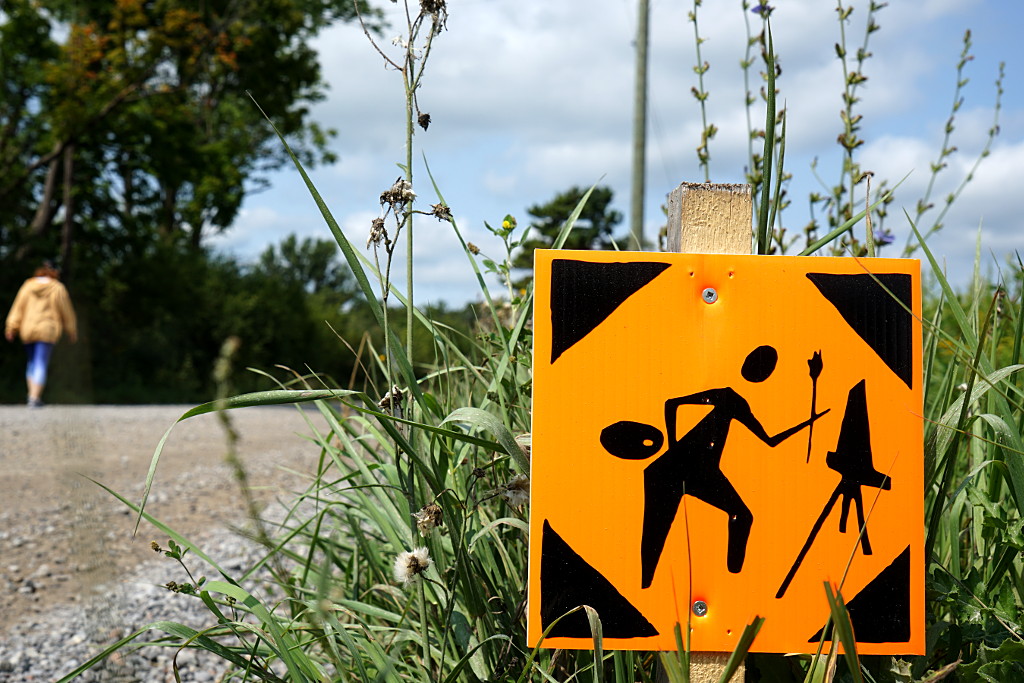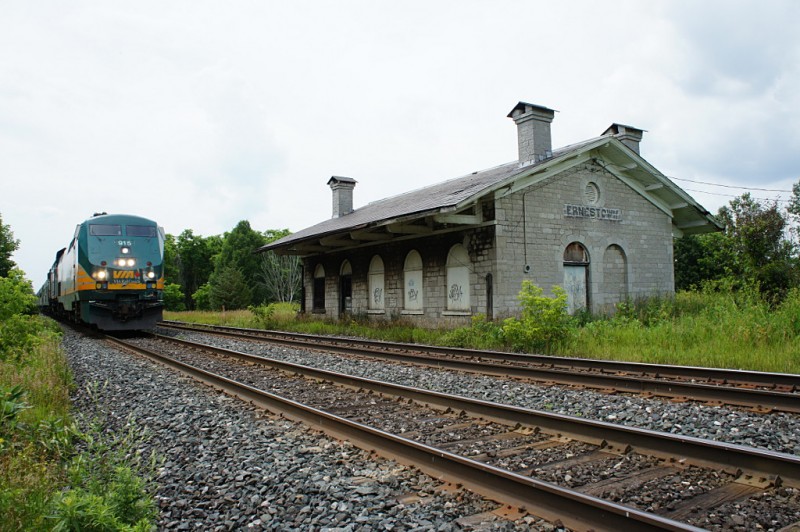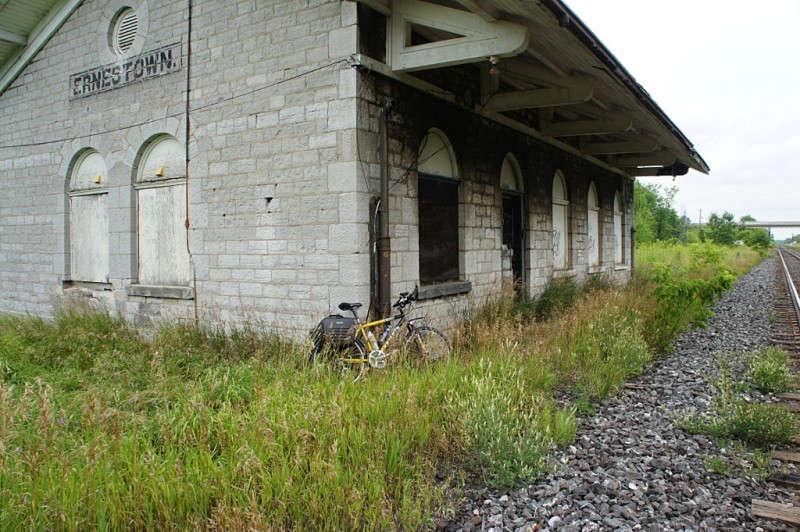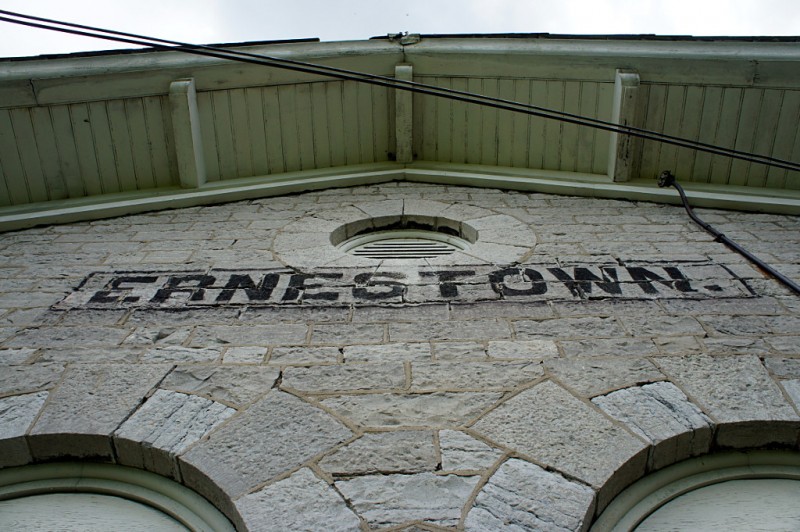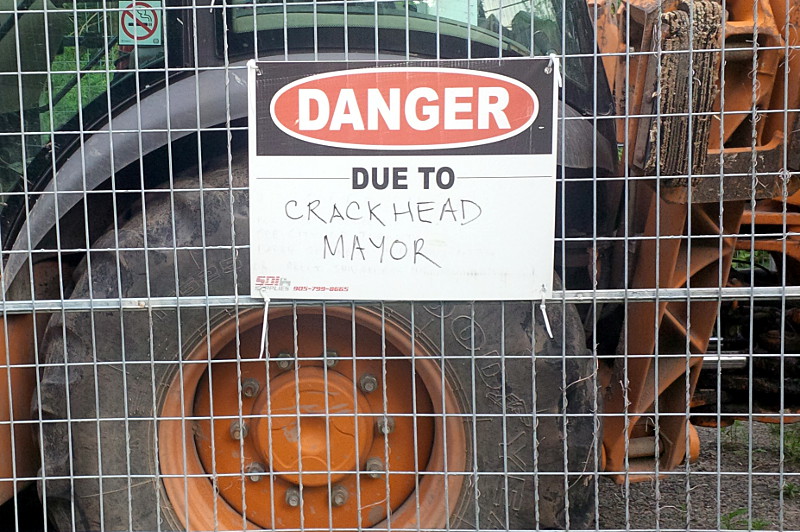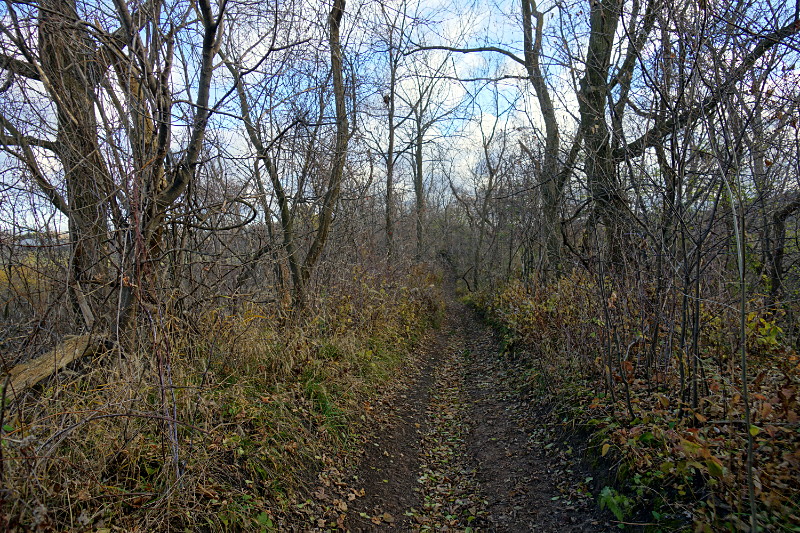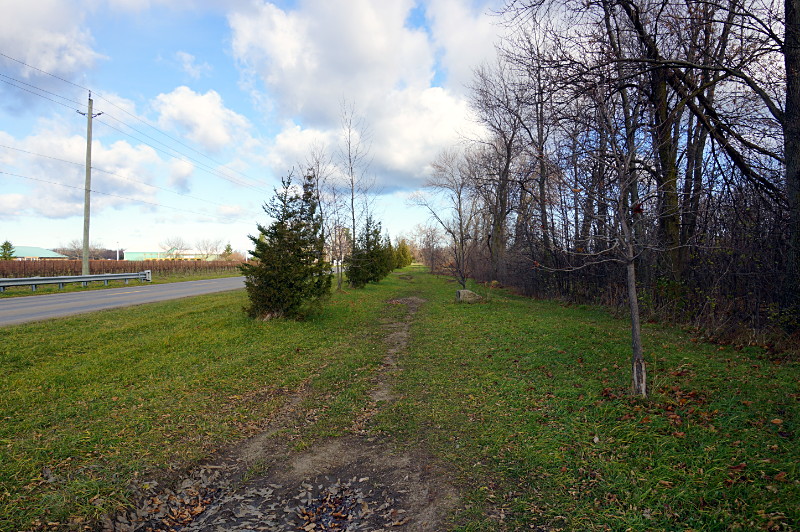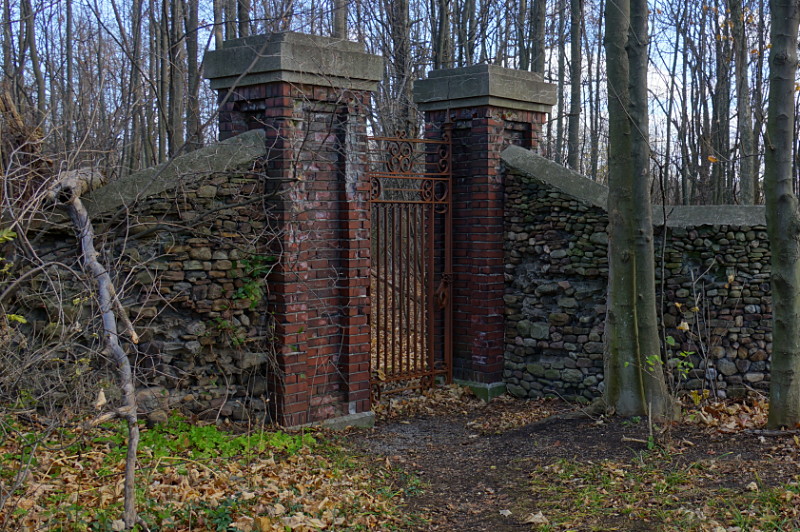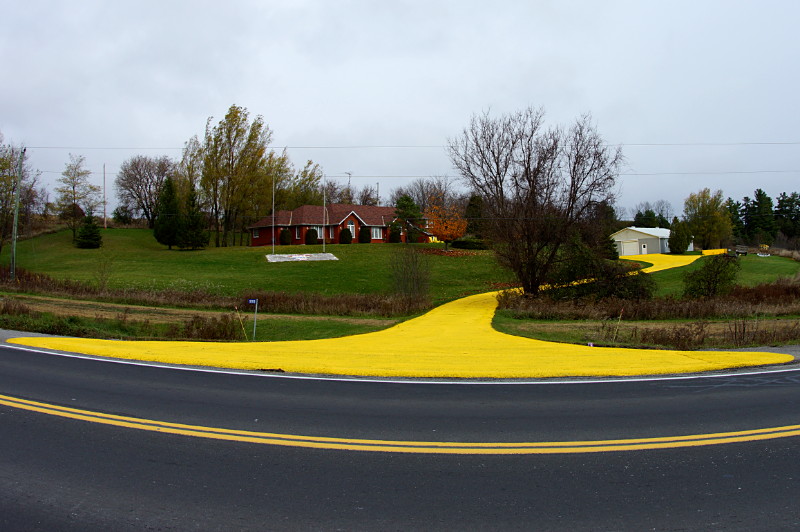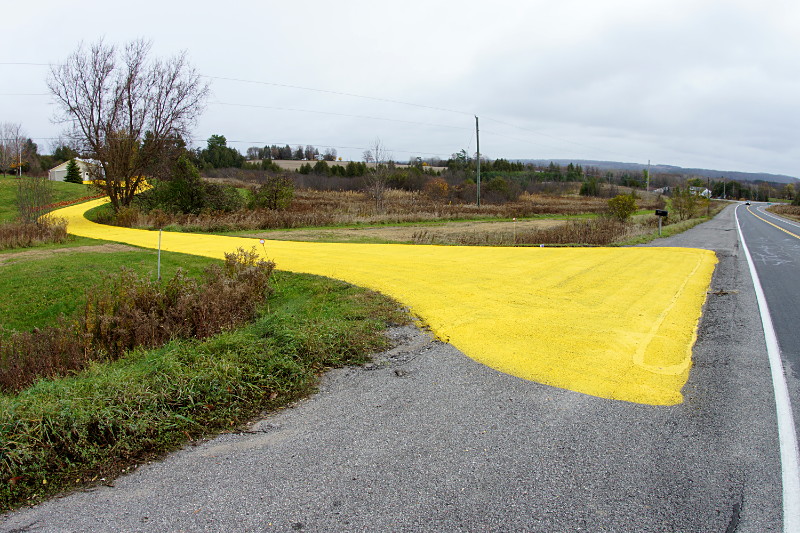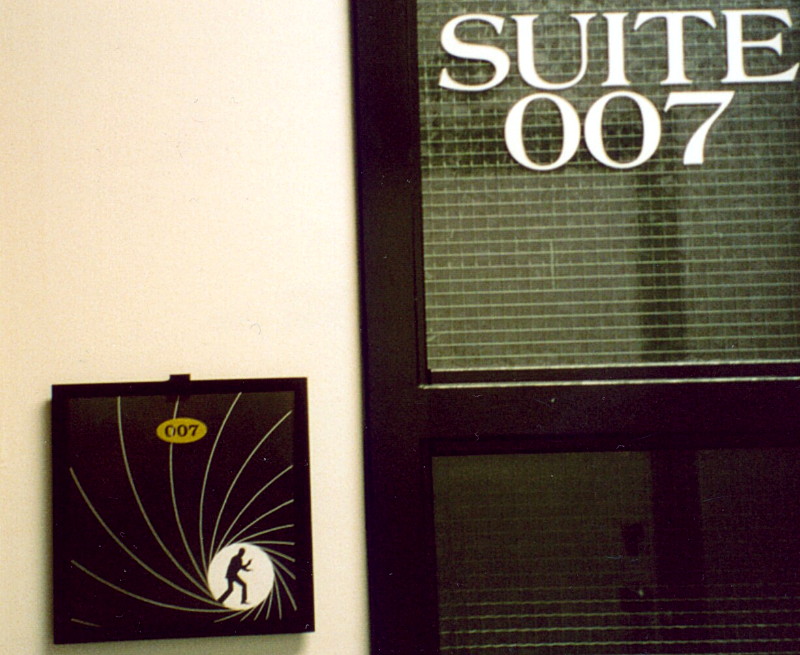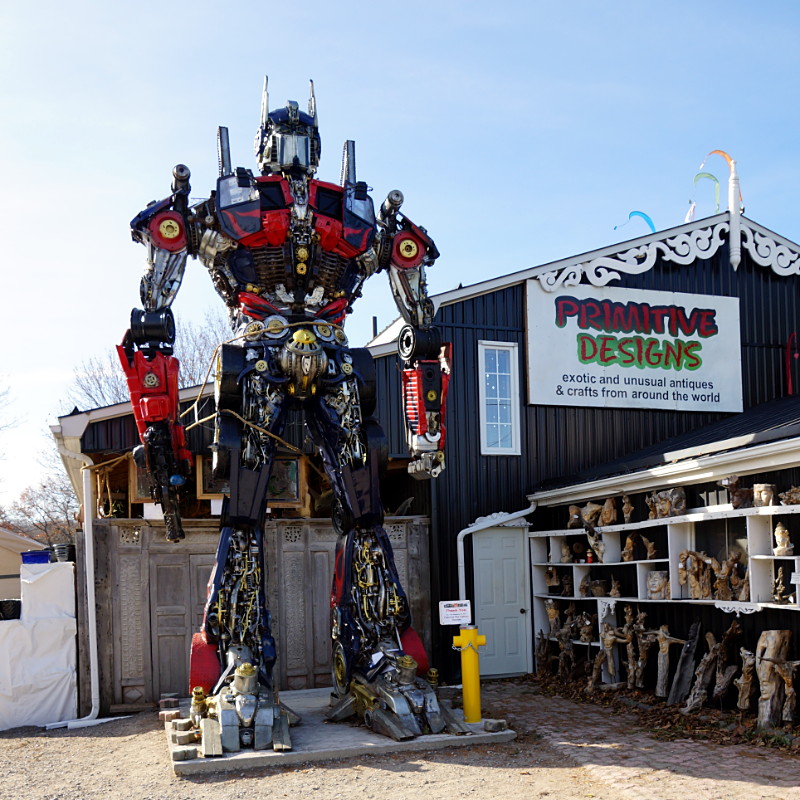That’s me in my new Quest velomobile, with my DF and Alleweder behind me. In my dreams, at least. In reality, I stopped by Bluevelo for a test ride in the Quest when I found myself in Collingwood last summer. And what a ride it was.
Bluevelo’s owner, Randy, accompanied me in the Alleweder as I piloted the Quest for an hour-long ride through the rolling countryside around Collingwood. Although I’ve lusted after the Quest for several years, it was my first time actually sitting in a velomobile. Indeed, it was my first time riding a recumbent. Hell, it was even my first time on a trike in nearly 40 years. And the Quest is a lot more sleek than the trike I used to power along East York sidewalks in the 1970s.
Randy and I set out on a warm sunny morning, first winding our way through local traffic and an industrial area before hitting the open roads just outside town. Riding a recumbent is all kinds of different from an upright bike. You grow accustomed to the sitting posture quickly enough, but leg muscles that are used to pushing down on pedals in a particular way take a little while longer to adapt to the legs-forward position. I thought my legs were going to fall off when we rounded the first corner, barely a couple of minutes into the ride. But it got better from there.
Coming from the world of upright two-wheelers, I quickly encountered a few things that required getting used to:
- The steering felt a lot more twitchy than I’m used to. I’m sure it’s just a matter of getting used to the steering tiller and using two front wheels instead of leaning to control my direction. I was already riding more smoothly by the end of my hour-long ride so the twitchiness would probably be gone entirely after a couple of days of regular riding.
- It’s heavy. No amount of aerodynamic fairing will help you climb a hill. I’m used to pulling a heavy trailer up all kinds of hills on loaded tours and I found the Quest’s 70-pound frame to offer a comparable experience. On the upside, you can go as slowly as you need to because you don’t need to maintain your balance. Feeling the weight on uphills and when starting from a dead stop would be a bit of a culture shock to a roadie.
- Chain slap. Shifting gears at speed sometimes resulted in big waves traversing the length of that long chain from the crankset at the front to the cassette all the way at the back. I’m used to making soft shifts on my upright bikes by easing off the pedals a bit when I hit the shifter but found that I had to be much more conscious about the technique in the Quest. Again, I’m sure that it becomes second nature once you’ve ridden it for a few days.
And that was basically it; I’d catalogued all of the negatives and idiosyncrasies within a couple of minutes of pedalling away from the shop. The rest of the hour was spent marvelling at the wonders of the Quest. Although the weight makes it slower to accelerate, the full fairing and low-to-the-ground posture mean that once you’re going, you can keep going with little effort or really fly with just a little more. And fly I did. I never did much more than turn my legs at a steady pace but ended up with an average speed slightly higher than I would have gotten if I’d done the same route all-out on my road bike. The aerodynamic shape is incredibly good at maintaining speed when you coast. And I coast a lot.
Going up hills was undeniably more difficult in the Quest than on a road or mountain bike, but it was far easier to maintain higher and more consistent speeds on the flats. As for downhills, they’re ridiculous amounts of fun: push a bit at the top and you feel like you’re going to take off by the time you get to the bottom. If you get going fast enough, the inertia can take you over the next roller so quickly that you don’t even notice you’re climbing.
I could definitely get used to taking the Quest for a spin through the countryside. Which raises the question…no, I haven’t bought one. Yet. I spent a full two hours at Bluevelo that day and the pitch is compelling. I went in expecting (maybe even hoping) to find some kind of deal killer but every time I said, “Yeah, but what about <X>?” Randy had a great explanation. I’m probably not going to buy one this year, but I can definitely see one in my mirror, slowly reeling me in. The only question is whether a velomobile will be my next city bike or my next touring bike.
